espiral.healthcare
eSpiral is an advanced tool that empowers clinicians by providing a more intuitive and efficient data visualization within Epic's electronic health record (EHR) system. eSpiral seamlessly integrates with Epic while enhancing the speed and accuracy of clinical decision-making.
Functionality
eSpiral is built on two main pillars:
Rapid Pre-visit Chart Review and Team Collaboration. This allows resident directors to quickly curate situational awareness for their teams, enhancing the overall efficiency of patient care. By leveraging interactive visualizations and real-time data extraction, eSpiral transforms the way clinicians interact with patient information.
Getting the situational awareness and wisdom to the front lines is where the eSpiral practice advisory builder comes into play. eSpiral allows physicians to create and share practice advisories, which are essentially guidelines or best practices that can be easily accessed by the care team. No hunting for notes; these advisories automatically surface when the patient chart is opened, ensuring that the most relevant information is at the clinician's fingertips. This feature is particularly useful for complex cases or when managing patients with multiple comorbidities.
Rapid Pre-visit Chart Review: eSpiral allows clinicians to quickly review a patient's chart before an encounter, surfacing key information in an easily digestible format. This pre-visit analysis helps clinicians prepare for patient interactions, leading to more effective and efficient care.
- Surfaces patient and encounter identifiers from Epic during launch (SMART launch integration)
- Extracts conditions, encounters, and observations into a proprietary visualization engine
- The proprietary engine renders the patient journey on interactive visualizations, allowing clinicians to quickly identify trends, patterns, and subtleties.

Team Collaboration with Practice Advisories: eSpiral leverages CDS Hooks to respond to EHR events with your own custom logic. This allows eSpiral to surface practice advisories at the point of care, providing clinicians with evidence-based recommendations and best practices tailored to the patient's specific situation. This feature enhances team collaboration by ensuring that all members of the care team have access to the same information and can contribute to the patient's care plan.
- Curate a subset of the problem list using eSpiral's visual engine.
- Add any relevant images or documents to the advisory for context.
- Use the built-in audio scribe to dictate notes or observations, which are automatically transcribed and added to the advisory using modern generative AI technologies.
- Share the practice advisory with the care team, ensuring that everyone involved in the patient's care has access to the same information.

Resident EMR View
How it looks in Epic:
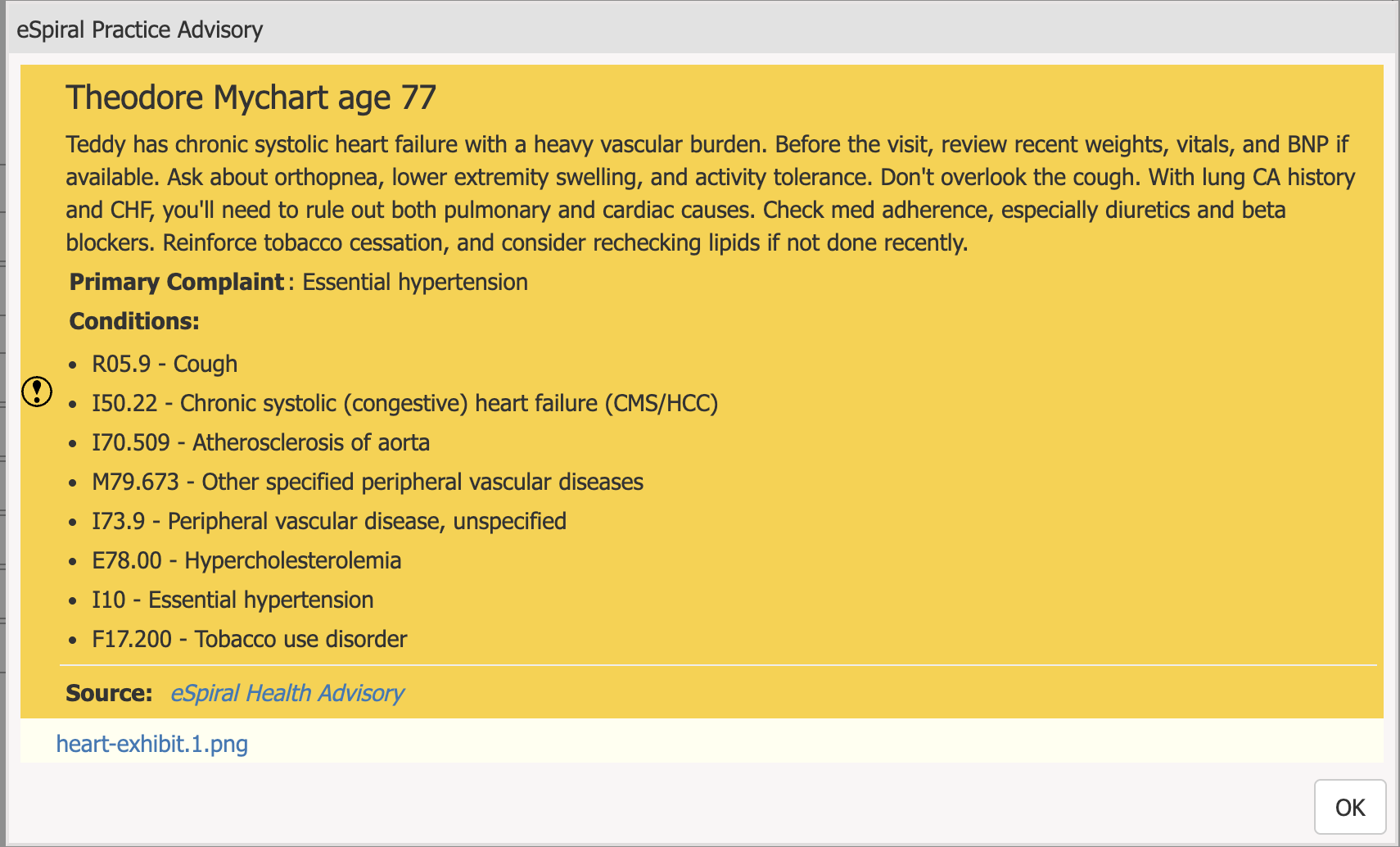
Images are available in the links section:

How it looks in other EMR systems:
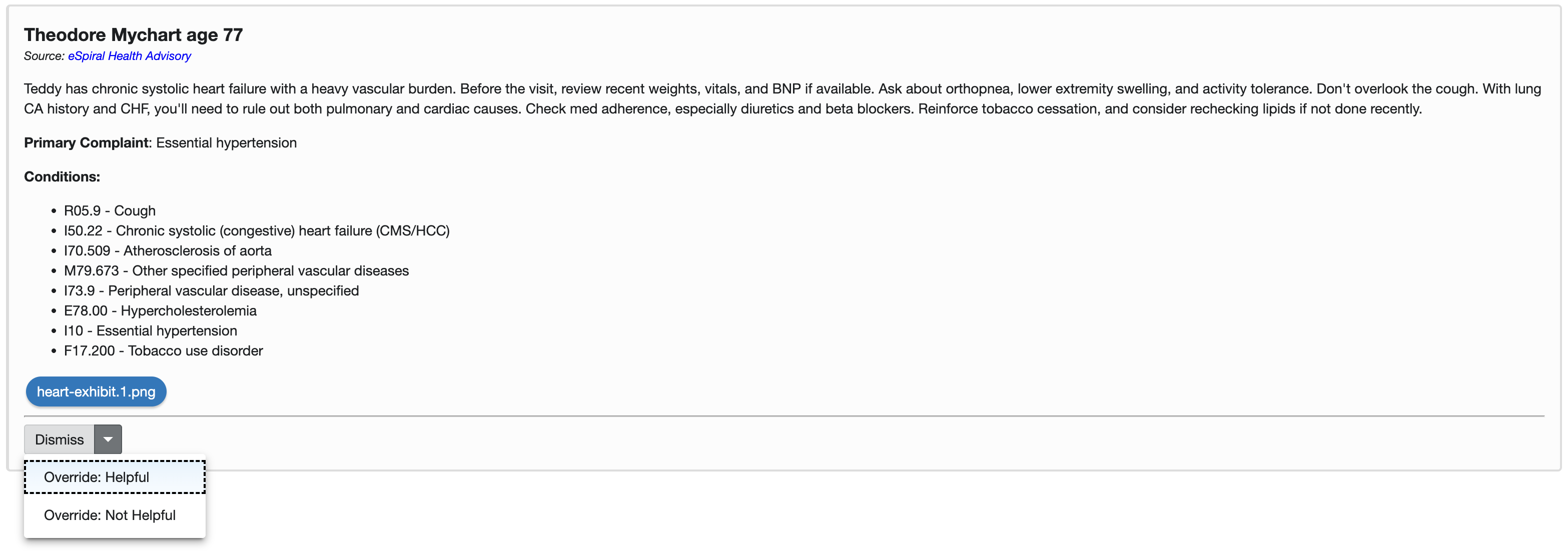
- Capture feedback from the care team on the effectiveness of the advisory, allowing for continuous improvement and refinement of the guidelines.

Highlights
Aside from the technical complexities of interactive visualization, the development of eSpiral surfaced several unique keys to success:
-
Epic Integration: Integrating a third-party application into Epic's complex and secure EHR system required meticulous planning and close collaboration with Epic's Vendor Services.
-
User Experience Design: The solution needed to align with the fast-paced environment of healthcare professionals, offering an interface that simplified complex data and supported quick decision-making with little to no additional training needed.
-
Feedback: Iterating on the product based on real-time feedback from stakeholders while ensuring that development continues to align with product-market fit and the needs of the providers.
Keys to Success
Building eSpiral was an exceptional experience for the team. We had the unique opportunity to deeply immerse ourselves in the daily workflows of physicians, allowing us to craft a product that truly fosters quick decision-making, collaboration, and situational awareness. Our approach to this project was characterized by several key factors:
Navigating Epic's Ecosystem
From the outset, we worked closely with Epic's Vendor Services. This partnership has been crucial in navigating the complexities of Epic's system and ensuring that eSpiral would integrate smoothly without any disruptions.
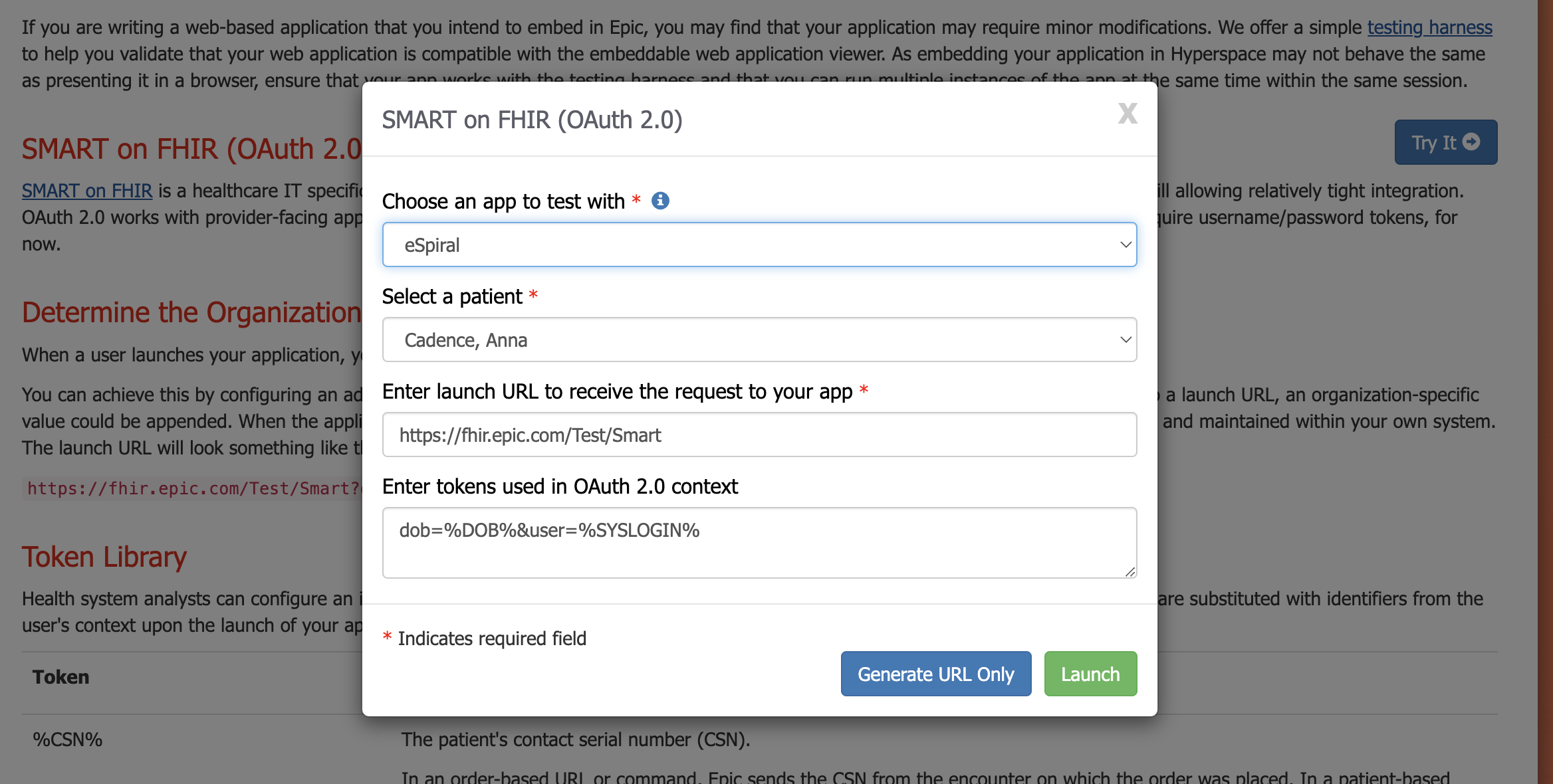
Live Testing Sites
To facilitate continuous iteration and gather actionable feedback, we maintained live staging and production environments throughout the development process. These sites allowed stakeholders to interact with the evolving product in real time, providing critical insights that informed each development sprint.
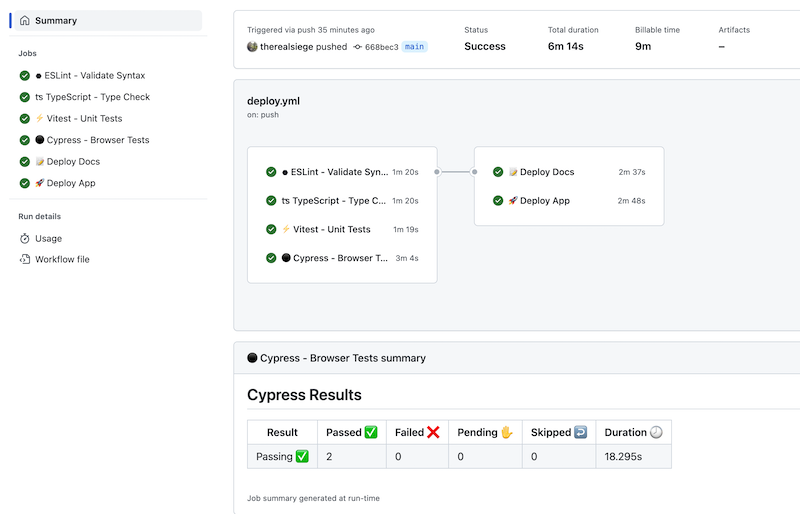
Whenever changes are made to the codebase, the CI/CD pipeline automatically triggers a series of tests to ensure that the new code is functioning as expected. This automated process helps identify and resolve issues quickly, ensuring that the tool remains reliable and efficient.
If those test cases pass, the code is automatically deployed to the appropriate environment, allowing users to access the latest features and updates seamlessly.
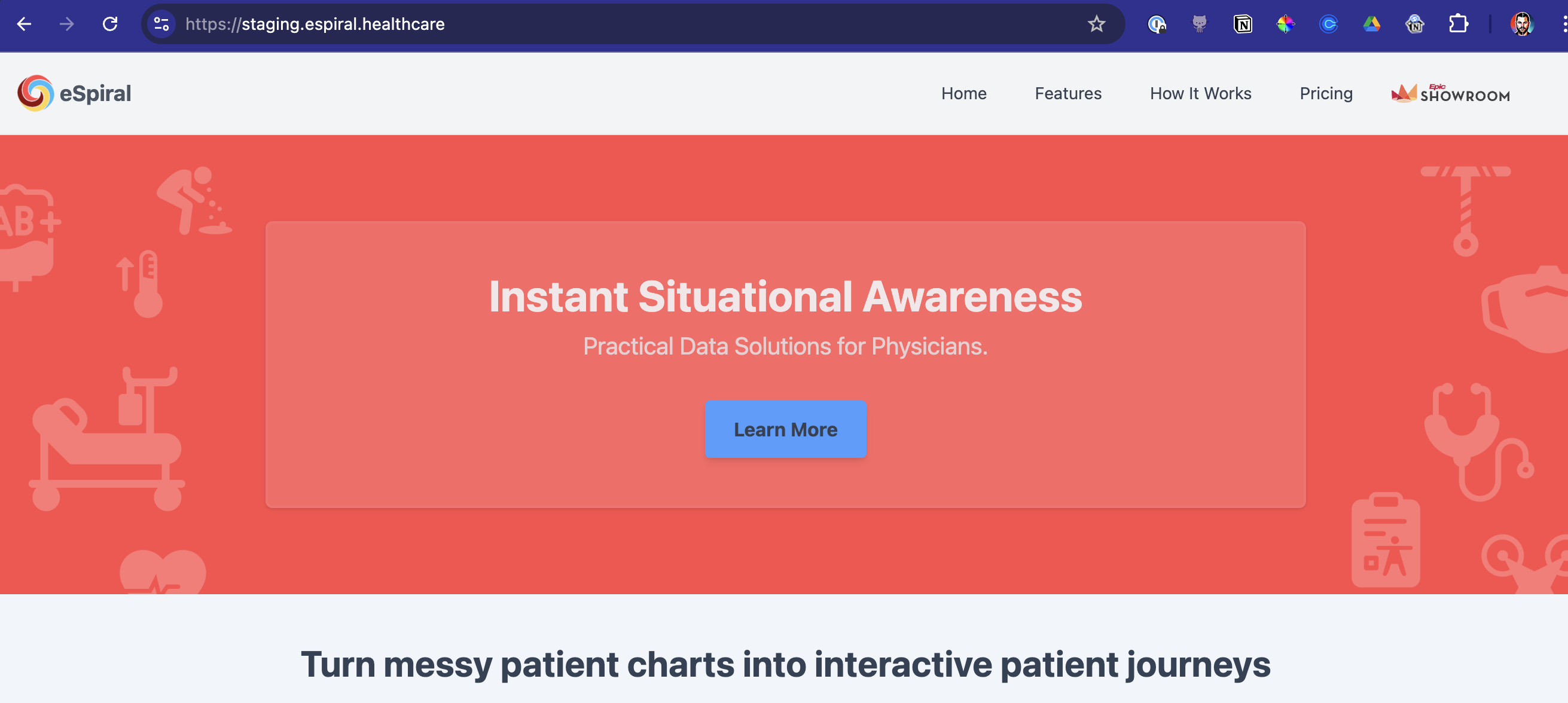
Documentation-Driven Approach
We leverage a documentation-driven approach, ensuring that every update and feature was thoroughly documented. This approach enabled asynchronous communication, allowing stakeholders to stay informed and provide feedback even if they couldn't attend meetings.
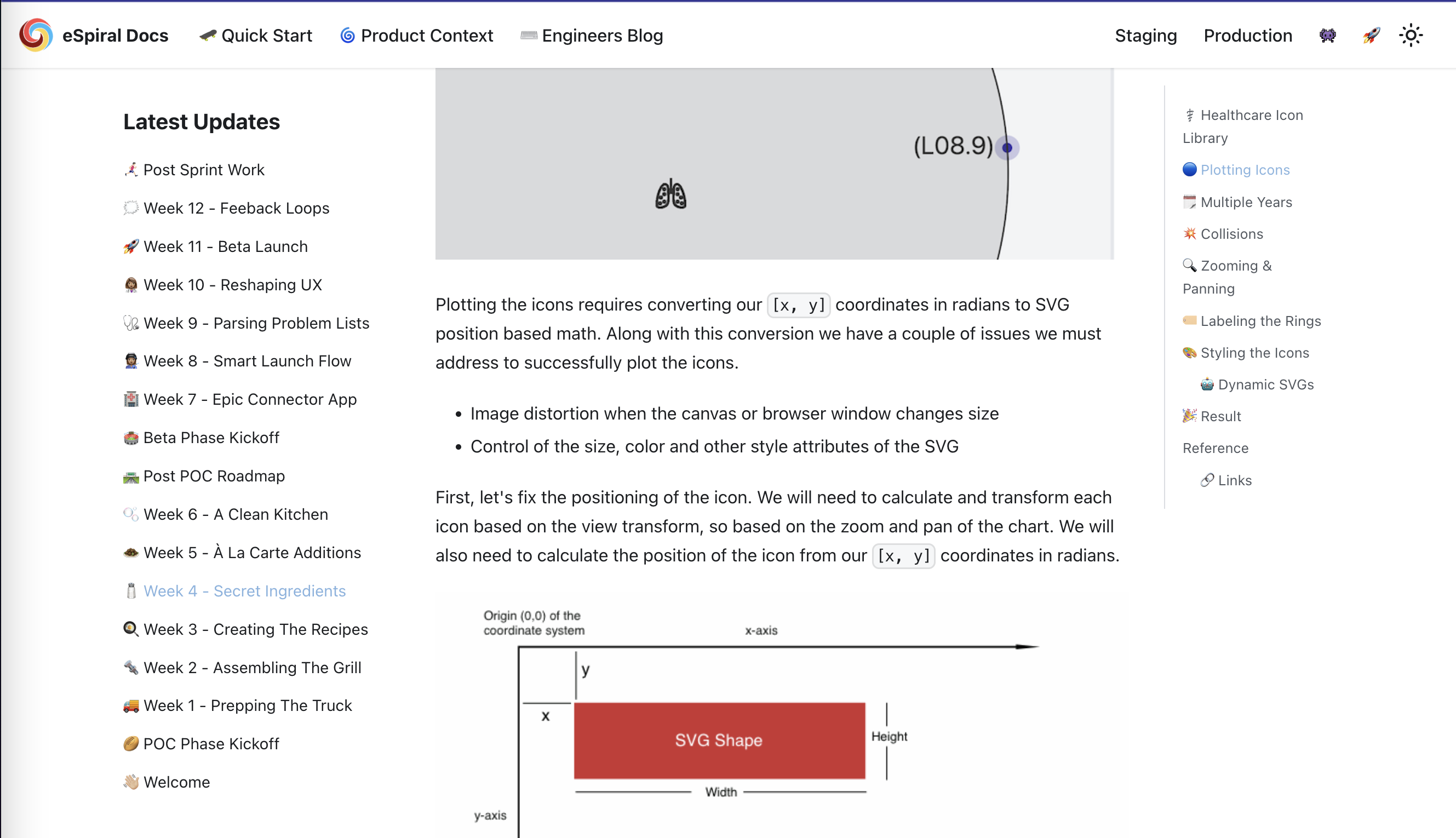
Feedback Loops
Regular communication with stakeholders was a cornerstone of our process. We conducted weekly feedback meetings where we showcased live demos of the latest features, gathering insights and adjusting our approach in response to their needs.
Results
-
Enhanced Workflow Integration: eSpiral was designed to fit seamlessly into the existing workflows of clinicians using Epic. The result is a tool that feels like a natural extension of their daily routines, enhancing efficiency without requiring extensive training.
-
Improved Decision-Making: The intuitive visualization capabilities of eSpiral have empowered clinicians to make faster, more informed decisions. This has had a direct impact on patient care, enabling healthcare providers to respond more quickly to critical situations.
-
Robust Data Security: Throughout the development process, we maintained a strong focus on data security. eSpiral was built to comply with all relevant regulations, ensuring that patient data remains secure and confidential.
-
Stakeholder Satisfaction: The collaborative approach we took—characterized by continuous feedback loops and live demos—resulted in a product that truly meets the needs of its users. Stakeholders expressed high levels of satisfaction with both the process and the final product.
"The eSpiral tool has significantly enhanced the productivity of chart review workflows and our resident program at Thomas Health. The team amazed me with their deep knowledge of healthcare technology and the possibilities within the EHR. They have created a solution that not only meets our needs but exceeds our expectations."
— Dr. David Clarkson, MD, Director at Thomas Health
The development of eSpiral is a prime example of how close collaboration, iterative development, and a deep understanding of user needs help ensure the delivery of impactful healthcare solutions.
By immersing ourselves in the physician workflows and maintaining a constant feedback loop, we were able to create a tool that not only integrates seamlessly with Epic but also enhances clinical decision-making and collaboration.
- Check out eSpiral on YouTube to see the tool in action.
- eSpiral is available for Epic users through the Epic Showroom.
- Learn more about eSpiral on the official website.
Contact us to learn more about how we can help you build innovative tools that align with your organization's needs and integrate smoothly with existing systems.

